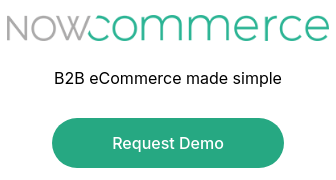QuickBooks has many features that it offers small and mid-size wholesale businesses. However, there are some best practices to follow to get the full benefit of QuickBooks order management capabilities. Here are seven things QuickBooks users need to know:

1. Create unique item numbers
The QuickBooks item list allows unique identification numbers (usually alphanumeric) to be given to each product for inventory purposes. Organizing your inventory with unique identification numbers will enable you to accurately count your products and the product variants. Product A may have different labels and descriptions, but if the unique identification number remains constant, it can be easily tracked, and tasks such as searches can be performed accurately.
2. Use QuickBooks price levels
Instead of creating different item numbers for products offered at different prices, use price levels instead. This makes tracking inventory simpler and more accurate. For example, if you give a discount to a customer on a product because of the volume they buy, rather than create a separate item number, set up a different price level but leave the item number the same. Your inventory doesn’t change because the price is different, so tracking the product at all prices should remain constant.
3. Label customers uniquely
Too often, business owners will use the generic “customer” as a label for all their clients. This makes it nearly impossible to gauge the sales activity of different customers easily and accurately. Reports that you run will be less comprehensive or understandable, with everyone labeled the same way. Use different names for different customers.
4. Use sales orders
Whenever there is a delay between a customer order and delivery, tracking inventory and orders becomes a problem. Using sales orders in QuickBooks allows you to run reports that allow you to see open and unfilled orders. You can follow this progression to be sure it is satisfactorily completed, and inventory counts are accurately reflected.
5. Use custom fields
QuickBooks lets you edit, create, and add custom fields to your customer and item records. You can use these fields to filter searches and to compile detailed reports. You’ll have to manually add them to any forms where they need to appear, but they will automatically appear in the filter lists when making reports or searches.
6. Keep records up-to-date
Over time, your files will start to have ghost entries. It’s a good practice to schedule a regular time to go through your QuickBooks files, clear out duplicate entries, and consider removing or archiving inactive accounts. You’ll want to be careful in this, but doing this will make searches faster, information easier to locate, and records accurate.
7. Integrate QuickBooks with a B2B eCommerce platform
QuickBooks does have many useful tools, but for your wholesale business to continue to be efficient as it grows, you’ll want to use an online order system that syncs with QuickBooks. You can make this ordering system available to your wholesale customers, outside sales reps, and internal staff. This will give them the ability to place orders online and retrieve important account information. This will cut down, or eliminate, manual data and order entry, simplify tracking, make information more readily available, and save you time and money.

